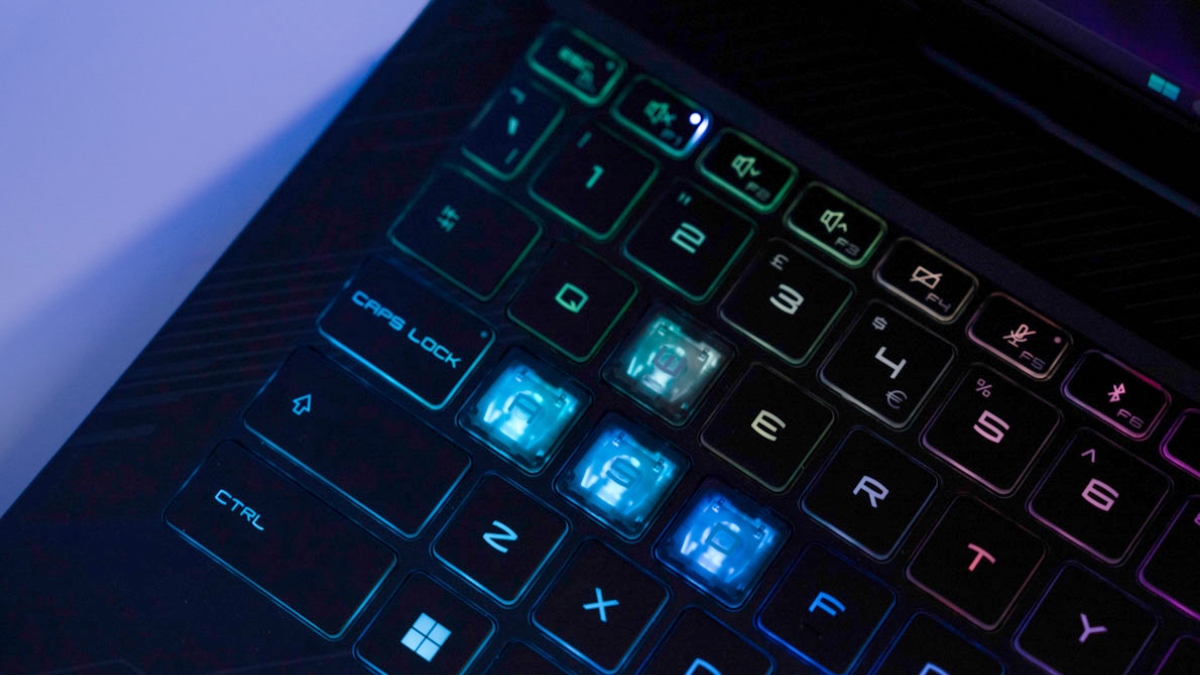Nvidia RTX 5090 laptop benchmarks reveal disappointing performance versus desktop

Table of Contents
The first laptops containing Nvidia's top-of-the-line RTX 5090 chip have begun to ship, and details on the performance figures have begun to leak out. Some online reviewers have already tested some of the models available, and the results do not paint a rosy picture for Team Green. While you can never expect a laptop GPU to be as powerful as its desktop counterpart, these new benchmarks are worse than expected.
Respected online publication NotebookCheck tested and benchmarked two RTX 5090 laptops, the 2025 Razer Blade 16 and the ASUS Strix Scar 18 G835LX. The results of these tests exposed an enormous gap between the desktop and laptop GPU performance.
Prime Day is finally here! Find all the biggest tech and PC deals below.
- Sapphire 11348-03-20G Pulse AMD Radeon™ RX 9070 XT Was $779 Now $739
- AMD Ryzen 7 7800X3D 8-Core, 16-Thread Desktop Processor Was $449 Now $341
- ASUS RTX™ 5060 OC Edition Graphics Card Was $379 Now $339
- LG 77-Inch Class OLED evo AI 4K C5 Series Smart TV Was $3,696 Now $2,796
- Intel® Core™ i7-14700K New Gaming Desktop Was $320.99 Now $274
- Lexar 2TB NM1090 w/HeatSink SSD PCIe Gen5x4 NVMe M.2 Was $281.97 Now $214.98
- Apple Watch Series 10 GPS + Cellular 42mm case Smartwatch Was $499.99 Now $379.99
- ASUS ROG Strix G16 (2025) 16" FHD, RTX 5060 gaming laptop Was $1,499.99 Now $1,274.99
- Apple iPad mini (A17 Pro): Apple Intelligence Was $499.99 Now $379.99
*Prices and savings subject to change. Click through to get the current prices.
RTX 5090 laptop GPU is up to 50% worse than desktop
Due to the much smaller form factor, laptops are far more thermally restricted, as there's no room to slap a massive fan or heatsink in to cool everything down. It was widely believed that the days when desktop performance vastly eclipsed the laptop equivalents were long gone, but the RTX 5090 laptop benchmarking tests suggest it has made an unwelcome return.
| GPU / laptop model | 3DMark score | Dota 2 (average) |
|---|---|---|
| NVIDIA Zotac GeForce RTX 5090 Solid | 93.4 pt | 291.8 FPS |
| Razer Blade 16 2025 laptop – RTX 5090 | 45.7 pt | 137.1 FPS |
| ASUS Strix Scar 18 G835LX laptop – RTX 5090 | 23.7 pt | N/A |
On the positive side, the tests showed a 15-30% performance uplift when compared to laptops using the RTX 4090. These are decent figures and don't take into account the impact of DLSS features like frame generation. However, considering the price tag of RTX 5090 laptops and how long customers have been waiting, a 30% increase might not be worth it.
When the mobile RTX 5090 is pitted directly against its desktop equivalent, a very different picture begins to form. Benchmark figures showed the mobile RTX 5090 was up to 50% slower than the desktop version.
For example, the Desktop Nvidia Zotac RTX 5090 GPU produced a 3DMark score of 93.4. The Razer Blade 16 RTX 5090 managed 45.7, while the ASUS Strix Scar scored only 23.7. Results were a little better in gaming benchmarks, Dota 2 Reborn on Ultra settings at 1920×1080 resolution got a framerate of 291 FPS on average from the Zotac desktop RTX 5090. The Razer Blade 16, by contrast, managed 137 FPS on average.
Some of this discrepancy can be put down to the difference in power requirements. The RTX 5090 on desktop has a TDP that reaches a massive 575W. Laptop GPUs usually have a TDP of 150 W or lower to keep things cool.
Unless this power difference can be resolved, the gap between desktop and laptop performance might start opening wider.

